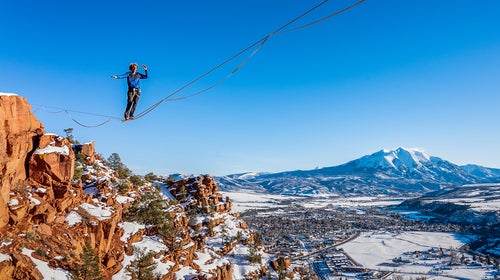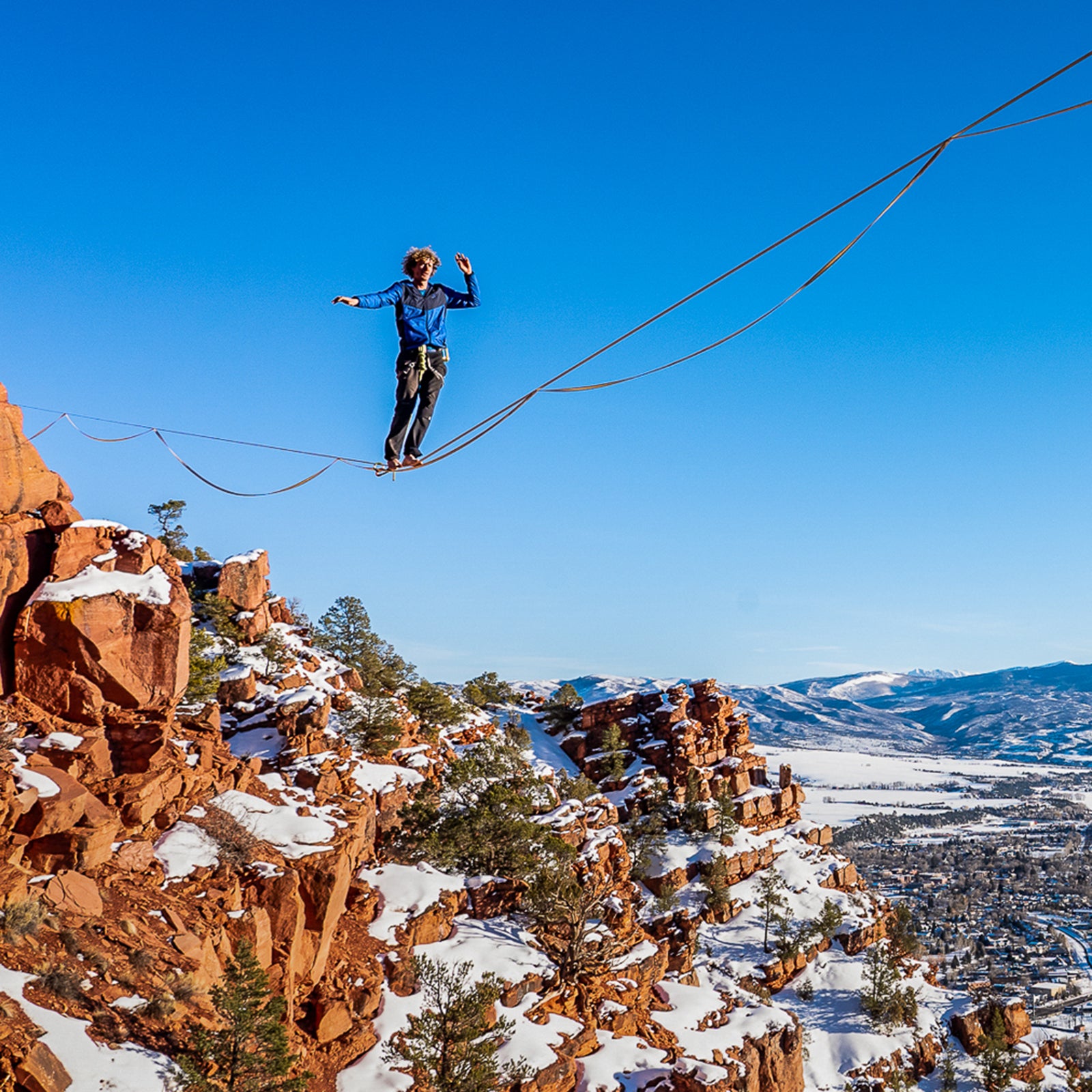A good layering system is like a quesadilla. You have a simple tortilla on the bottom and another on top, but itÔÇÖs the beans and queso and carne in between╠řthat really matter.╠řCompared to outer╠řand base layers, midlayers╠řare the most versatile and variedÔÇöand arguably the most important. While a base layerÔÇÖs╠řmain job is to wick sweat from the body, and an outer layer╠řprotects you from the elements, midlayers can do both and are also responsible for insulation.
Midlayers run the spectrum from thin fleeces to down puffies╠řand, at the╠řmore insulated╠řend, can double as outer layers in fair weather or shoulder seasons. They have a huge range of insulation weights, breathability, water and wind resistance (if any), features, and fits (see our How to Choose guide at the end of this piece). What you choose to wear on a given day depends largely on the weather and the activity you plan to do. So, whether you ride the chairlift or ski uphill, perfecting your layering system will save you from freezing, sweating, and having to adjust on the move.
ThatÔÇÖs why a team of eight gear testers and I set out to find the ultimate filling. For a full year, we put╠ř35 midlayers from 22 top brands through the ringer, covering the range of fleeces╠řto puffies and everything in between. Our conclusion: you can never have just one midlayer. Different conditions and activities call for different layering systems. But with so many options, choosing the right combination╠řcan be daunting. To save you the time and effort of experimenting, here are the╠řfive must-have╠řcategories we settled on, the best uses for each, and the runners-up in each category.
- Best All-Around Midlayer
- Best Fleece Midlayer
- Best Active-Insulation Midlayer
- Best Hybrid Midlayer
- Best Puffy Midlayer
How We Test
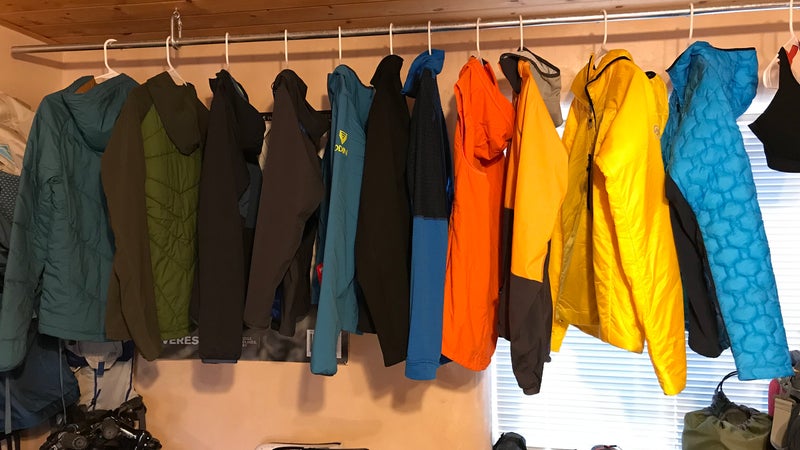
Over the course of a year, we tested midlayers up and down╠řthe length of the Rocky Mountains, from Canada╠řto Colorado to New Mexico, and in╠řthe Pacific Northwest. The testers were athletes, guides, adventure photographers, dog mushers, and weekend warriors. One, Rafal Andronowski, runs the blog ,╠řwhere he has thoroughly tested and reviewed countless pieces of outdoor gear. As a Vermonter, I have winter in my blood. I grew up alpine and cross-country skiing (out my back door) before discovering╠řice climbing in my teens, which has consumed me ever since. IÔÇÖve covered gear for the past six years, previously as an editor at , and now for ║┌┴¤│ď╣¤═°ÔÇÖs biannual BuyerÔÇÖs Guide.
On average, three people tested each layer, although due to limited sample availability, some were used by only╠řone or two. Each tester wore╠řthe layers in as many different conditions and for as many different activities as possible, including ice and mixed climbing, rock climbing, highlining, ski touring, resort skiing, cross-country skiing, snowshoeing, dogsledding, outdoor photography, trail running, hiking, fly-fishing, camping,╠řtraveling, barhopping, and teaching in a classroom with a broken heating system.
After a winter of heavy use, the team filled out in-depth review forms for each layer. Combining that feedback with my own findings, I narrowed down the field of 35 items to the ten╠řlayers we loved the most, in terms of performance, function,╠řand fit, within specific categories.
Best All-Around╠řMidlayer
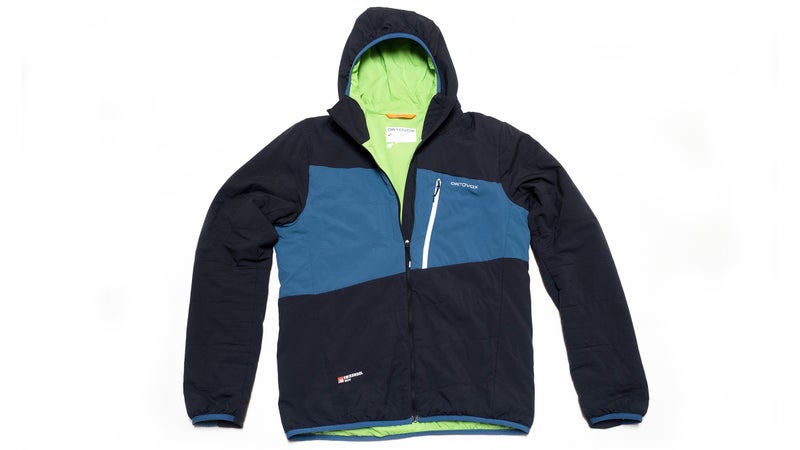
This 9.2-ounce,╠řslim-fitting, full-zip hoodie╠řis the╠řlightest╠řmidlayer on this list╠řand deceptively warm for its weight. Its secret sauce is OrtovoxÔÇÖs proprietary Swisswool insulation. Made from a matrix of wool fibers, it acts like synthetic loft with the moisture-wicking and odor-resistant benefits of wool. The outer fabric, made from 100 percent polyamide, allows ample freedom of movement and breathability╠řwhile still providing moderate wind and water resistance.
quickly became our go-to for ski touring. On chilly single-digit-temp dawn patrols,╠řit was toasty enough to wear with just a thin base layer on the uphill. It blocked the wind, shed light snow, and kept us╠řcomfortably warm without tipping the perspiration threshold. The Zebru was╠řso breathable that even on fair-weather days, when pumping hard uphill, I never broke a sweat. For downhill skiing, harsh conditions, or lower-output activities, the hoodie╠řeasily fits under a shell or thicker jacket without bunching or restricting movement, yet itÔÇÖs stretchy enough to accommodate another midlayer beneath. While not adjustable, the hood seemed to fit our testers perfectlyÔÇöan elastic edge seals around the face, hugs the head, and moves╠řwhichever way╠řyou look. ItÔÇÖs╠řcomfortable underneath a helmet, and through some sort of sorcery, also fits over a climbing helmet. Not many hoods can do both.
My only complaint about the jacket╠řis that╠řthe elastic-waist hem tends to ride up when IÔÇÖm╠řreaching overhead.
Although it was designed for ski touring, the Zebru is ideal for any fast-paced winter activity where warmth and breathability╠řare key. This is the layer you put on in the morning, never have to think about, and donÔÇÖt take off until the day is doneÔÇömaking it well worth the $280 price tag.
Like the Archaeopteryx fossil the brandÔÇÖs name is based on, it seems as if the has been around for ages, yet thereÔÇÖs a good reason it continues to be one of our all-time favorite midlayers. Constructed with 60-gram synthetic insulation surrounded by a DWR-treated 20-denier shell with stretchy fleece side panels, itÔÇÖs a highly versatile layering piece for a range of activities and conditions. (Denier is a measurement of the weight of the fibersÔÇöhigher numbers are thicker and generally more durable, while lower numbers like these are finer and may be lighter and more breathable.) The athletic-fitting, compressible, and durable hoodie╠řserves equally well as a midlayer for cold-weather and stop-and-go sports╠řor as an outer layer for high-output╠řdays under friendly skies.
Best Fleece Midlayer
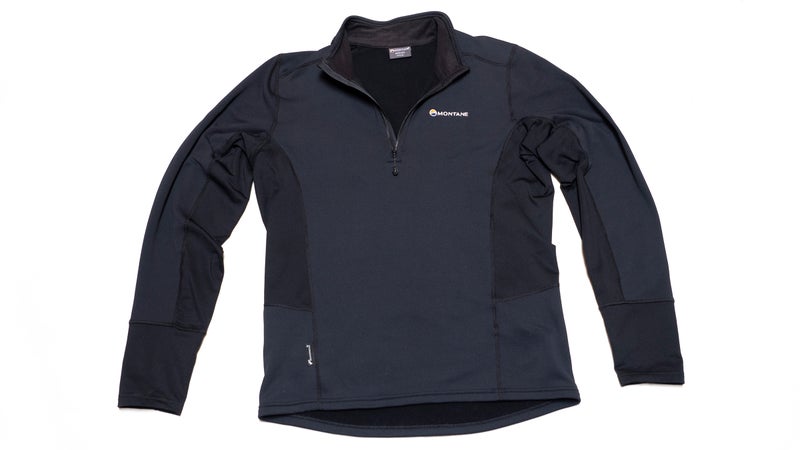
The lightweight (9.5 ounces) and super-stretchy puts a technical twist on the classic quarter-zip fleece, which landed it among our favorites. At first glance, it looks like a typical hard-face fleeceÔÇösmooth on the outside, fuzzy on the insideÔÇöbut thereÔÇÖs more hiding beneath, and on, the surface. The Iridium is a hybrid constructed with a midweight fleece (front of the torso, top of the sleeves) for warmth and durability╠řand a thinner fleece over╠řsweatier areas (underarm, sides, back) for better breathability. Moreover, the outside is covered with a ceramic material printed in a herringbone pattern╠řfor added abrasion resistance that doesnÔÇÖt╠řcompromise╠řstretch.
Our testing team wore this while ice climbing in the frigid Canadian Rockies, ski touring in New MexicoÔÇÖs Sandia Mountains, and resort skiing at Taos in temperatures that ranged from minus 10 to 20 degrees Fahrenheit.╠řThey stayed cozy through all of these activities.╠řOne tester wrote, ÔÇťIt surpassed all of my expectations.ÔÇŁ I was skeptical about the ceramic print at first, but it does seem to work: after a winter of heavy use, my Iridium shows no signs of wear or pilling, even in high-abrasion zones, like where it tucks into my climbing harness. This was the only fleece pullover in the test, and, at $95, it also happens to be one of the least expensive. The slim fit and generous stretch make it a great layering piece.
If youÔÇÖre seeking a simple do-it-all fleece for any winter activity, whether thatÔÇÖs climbing or skiing mountains, hiking, or hanging at the bar, this is it.
While not as insulating or light (12 ounces) as the Iridium, this simple, f╠řstrikes a good balance between technical and casual. Made from a╠řthin and╠řstretchy Polartec fleece thatÔÇÖs smooth on the outside, waffle-patterned on the inside, itÔÇÖs a╠řcomfy╠řall-rounder for the mountains,╠řtown, or travel. Day to day, I use it more than any other layer here┬şÔÇöI practically live in itÔÇöbut for intense outdoor activity, I prefer the Iridium for frigid days of alpine skiing and the Alpha Freak for ice climbing, since those offer more warmth and breathability, respectively.
Best Active-Insulation Midlayer
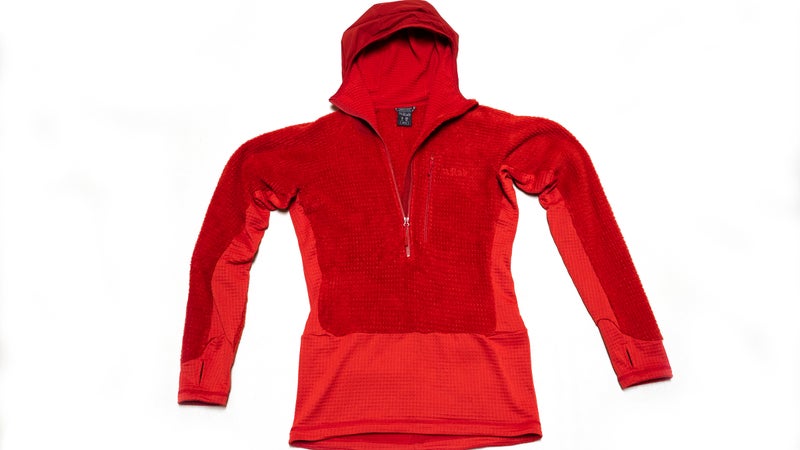
Rab Alpha Freak Pull-On ($175)
This 15-ounce half-zip hybrid hoodie╠řis as cozy as it is functional. Made with a combo of Polartec Alpha Direct (a lofted synthetic fabric without backing, so the fuzz is exposed on both sides) and Polartec Power Grid (a hard-faced fleece with squares of insulation on the inside), the holds heat like a habanero╠řyet is highly breathable, efficient at╠řwicking, and quick to dry. It has a long hem to tuck under a harness, long sleeves with thumb loops for unrestricted overhead reaches, and a helmet-compatible hood╠řcovered with Pertex Quantum╠ř(a lightweight hard-shell fabric) and DWR for wind╠řand water resistance.
We tested this piece╠řwhile ice and mixed climbing throughout Colorado and the Canadian Rockies in temperatures ranging from minus 20 to 36 degrees Fahrenheit. No matter the forecast, we found ourselves reaching for this layer over and over again. Comfortable next to skin or with a light base layer beneath, it hugs the body and has plenty of stretch, so it doesnÔÇÖt bind in the armpits or feel constrictive. With a second midlayer or shell on top, I could climb without overheating, then stand at a belay without freezingÔÇöall without needing to adjust my layering system. One tester wrote, ÔÇťThis will be my new go-to midlayer for technical excursions.ÔÇŁ Our only nitpicks are╠řthat the hood is a little too tight to fit over a helmet, and╠řthe Pertex Quantum is crinkly and loud under a lid, making communication more difficult.
While the Alpha Freak is designed specifically for climbing and moving fast in alpine terrain, it serves equally╠řwell for aerobic activities, such as running, cross-country skiing, ski touring, and hiking, or as a layering piece for alpine skiing, walking the dog,╠řor outdoor chores.
Runner-Up: Norr├Şna Lyngen Alpha90 Raw Jacket ($129)
The is so thin that it looks barely there, but for fast-paced winter sports like cross-country skiing, running, and touring, or lower-octane activities on warmer days, itÔÇÖs just insulating enough╠řand plenty breathable. The full-zip jacket╠řuses Polartec Alpha Direct╠ř(a synthetic╠řmeshlike material with clumps of fuzz on both sides) on the chest, back, and shoulders╠řand a grid fleece around the bottom, lower sleeves, and sides, like a skinnier cousin of the Alpha Freak. Our concern here was its durabilityÔÇöthe superlight╠řfabric╠řseemed as if it could easily shred if caught on a tree branch or ice tool, though it remained intact through testing.
Best Hybrid Midlayer
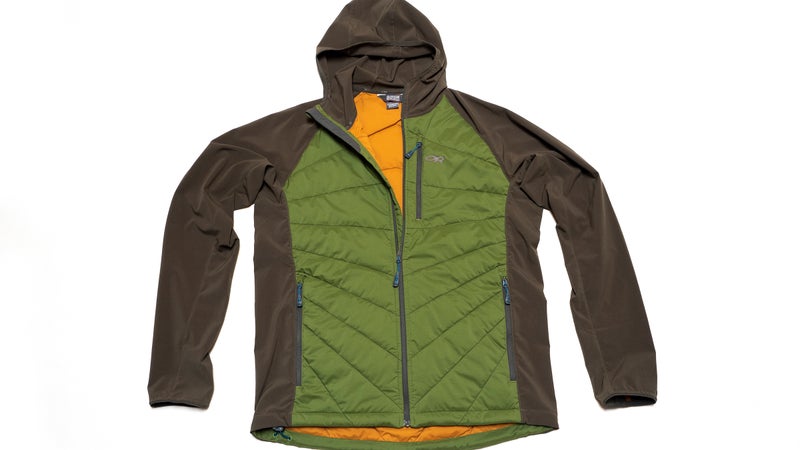
Outdoor Research Refuge Hybrid Hooded Jacket ($159)
The love child of a soft shell and a vest, the╠ř has noninsulated sleeves and sides (made from a 75-denier stretch fabric, of which 39 percent is recycled polyester)╠řand ORÔÇÖs VerticalX insulation (a high-loft, 60-gram, synthetic fill constructed in vertical columns to wick moisture efficiently)╠řover the chest and back (covered by a 20-by-30-denier polyester ripstopÔÇöthicker fibers run in one direction of the weave, thinner in the other to provide mechanical stretch). This high-loft, 60-gram, synthetic fill consists of vertical columns, which is designed to╠řtrap air but let moisture escape efficiently.
We used this layer for hiking, ice climbing, and alpine skiing╠řand were impressed at how well it cuts the wind and keeps the core warm. Like many of our top midlayer picks, the Refuge Hybrid functions as both an outer and a midlayer, depending on conditions. All three pockets (two hand, one chest) are lined with mesh, so you can unzip them╠řfor extra ventilation╠řwhen you need it. The left hand pocket also doubles as a stuffsack╠řand includes a carabiner loop with a plastic clasp so you can clip it to a harness or backpack. The hood is not adjustable, but itÔÇÖs fitted and sits comfortably beneath a helmet. As for the overall fit, the sleeves are slim, stretchy, and unrestrictive, but as the only detractor, the torso is a little boxier than weÔÇÖd prefer on a midlayer.
Since thereÔÇÖs no insulation in the sleeves and sides, the Refuge Hybrid is best for activities where youÔÇÖre moving fast and working hard in cold weather, such as climbing, skiing, and running. It would be suitable for hiking or walking on warmer days.
Runner-Up: Salomon Haloes Hybrid ($185)
The is similar to the Refuge Hybrid in design╠řbut with baffled insulationÔÇöa mix of 90 percent down, 10 percent featherÔÇöonly on the chest. We found it to be less versatile than the Refuge for stop-and-go activities╠řsince itÔÇÖs warmer up front╠řyet cooler in the back, but itÔÇÖs still excellent for winter sports that involve moving at a fast, steady pace. The four-way stretch fabric on the sleeves and back is windproof, and the entire layer has a DWR treatment.
Best Puffy Midlayer
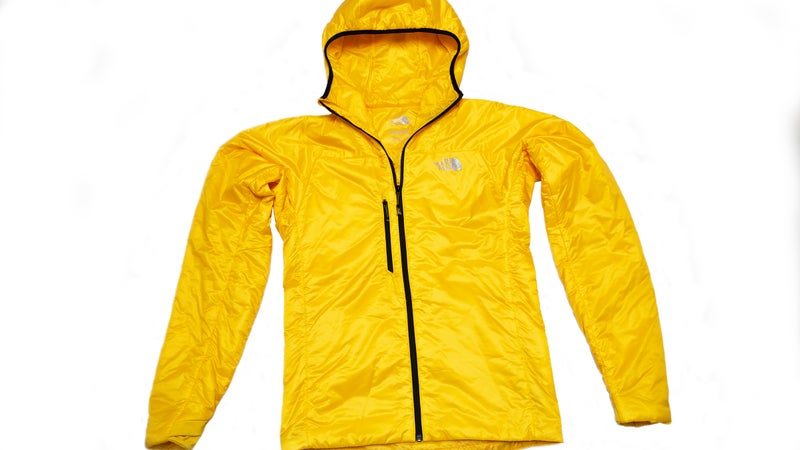
($225)
The warmest midlayer among our favorites, the is a sleek, lightweight (12.3 ounces), synthetic jacket that belongs in the alpine. Minimalist in design, it has only a single chest pocket and a hood. The jacket features 60-gram╠řPrimaloft Gold Active insulation on the inside╠řand a 15-denier nylon ripstop outer with a DWR finish.
While this hoodie╠řwould be at home in the Himalayas, it served us well for tamer inbounds╠řand backcountry ski days in the Pacific Northwest and northern New Mexico. It leans toward an outer layer for all but the gnarliest of conditions, and we found that it blocks wind and sheds light snow with ease. For heavy, wet snow or rain, though, IÔÇÖd want a shell on top. Fortunately, the athletic fit makes this hoodie comfortable to layer under a shell or larger jacket when itÔÇÖs nuking, yet it leaves plenty of room to add one or two layers beneath it as well. The hood fits over a helmet, and when cinched down using the single rear toggle (which is╠řeasy to grasp with gloves on), it also fits great without. One tester wrote, ÔÇťIf I could only have one of the layers I tested, this is the one I would keep.ÔÇŁ For better or worse, this layer comes in only canary yellow╠řand, as one tester noted, will make you look like a traffic cone. But hey, at least youÔÇÖll be visible in the mountains.
Overall, this climbing and skiing hoodie is best for moving quickly at altitude or in cold and windy conditions. Although, if youÔÇÖre seeking something a little more casual-looking for all-around use, you might be better suited with the Kor Strata Alpine.
Runner-Up: Mountain Hardwear Kor Strata Alpine Hoodie╠ř($280)
╠řis insulated with two types of high-end synthetic loft for targeted warmth and breathability. The outer fabric is a combo of a mechanical stretch nylon ripstop (the stretch comes from the weave, not the material itself) around the waist, on the back, and under the arms.╠řA╠řweather-resistant 15-denier nylon ripstop on the hood, shoulders, and chest provides╠řadded protection against falling snow and dripping ice. While we felt its fit and performance didnÔÇÖt quite match that of the Summit L3, the additional hand pockets and toned-down looks make it a better choice for everyday wear.
How to Choose a Midlayer
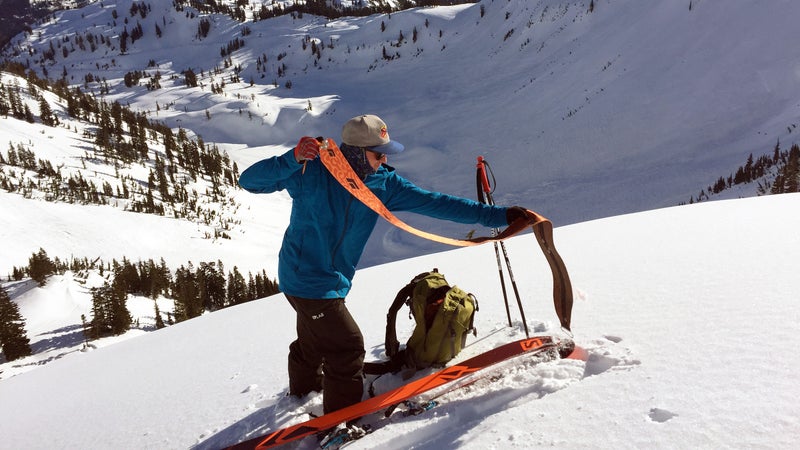
Insulation
Insulation type, weight (thickness), and properties are the first things to consider when choosing a midlayer.
Down
DownÔÇöthe clusters of soft, fluffy filaments that keep a bird warm beneath its water- and wind-repelling feathers, rather than the feather themselvesÔÇöholds loft to trap air and retain heat while still allowing moisture to wick away. It has an excellent warmth-to-weight ratio╠řand is highly compressible, so itÔÇÖs easy to pack. But when wet, down╠řcollapses and it loses╠řits loft and thus its╠řability to retain heat (plus, itÔÇÖs slow to dry), so down is best for cold, dry conditions╠řor underneath a waterproof shell. That said, there are hydrophobic treatments that allow down to resist getting wet╠řso it maintains its╠řinsulating properties, but itÔÇÖs usually not 100 percent effective╠řand, like a DWR, can wear out over time.
Not all down is equal. ItÔÇÖs sourced from either geese (higher quality, more expensive) or ducks (less loft, cheaper). Its effectiveness is measured in fill power, or how many cubic inches an ounce of the fluff occupies. That typically ranges from 450 at the lower end╠ř(and colder and cheaper)╠řto 900 at the higher end╠ř(and warmer and pricier) of the spectrum.
Harvesting down comes with a host of╠řethical concerns╠řover the treatment and slaughter of the animals, but brands like Patagonia (with its╠ř)╠řand third-party certifications (from organizations such as╠ř╠řand╠ř)╠řensure the insulation in your puffy comes from birds that are treated humanely. If this is a deciding factor for you, check the label before you buy.
Synthetic Loft
Made from clusters or sheets of intertwined fibers (typically polyester), synthetic insulation comes in many different forms╠řbut is designed to replicate the properties of down╠řand maintain them when wet. Compared to down, synthetic loft is much cheaper, hypoallergenic, water resistant, and fast-drying. But itÔÇÖs not as compressible and has a higher warmth-to-weight ratio, meaning you need more of it to achieve the same level of down insulation. Synthetics are heavier and donÔÇÖt pack as well╠řbut are usually the better choice for wet climates or activities.
Wool
A timeless textile, wool shines at trapping heat (even when wet) and╠řwicking moisture╠řand is more odor resistant than cotton, down, and synthetics. The only downside: quality sheep fleece, like merino wool, is more spendy than man-made alternatives. The crimped fibers are typically spun into strong yarns, which are then made into knits or weaves. Newer forms of wool insulation, like in the Zebru, place wool fibers in a matrix to create a lofted sheet of insulation that resembles a synthetic in form╠řwith the benefits of wool.
Polar Fleece
Made from polyester, this fuzzy synthetic doesnÔÇÖt absorb much moisture, retains its insulating properties when wet, and dries fast. ItÔÇÖs durable, lightweight, and stretchy, which makes it a great layering materialÔÇöplus, itÔÇÖs relatively inexpensive compared to wool and down.╠řFleece can pill over time, however, and can be damaged from high temperatures, so it should be air-dried or put in a dryer on a low-heat setting. Compared to down, itÔÇÖs not as warm for the weight, and it tends to hold body odors more than wool, so it can get stinky after multiple days of use.
Hybrids and Body Mapping
Hybrids use a mix of materials to maximize their benefits in specific locations. They give you more insulation, weather protection, or durability where you need it most (typically around the core, on the shoulders, and on top of the arms)╠řand more air permeability where you need to vent (like the armpits, sides, and back).
Active Insulation
ThereÔÇÖs no set definition for what qualifies as active insulation, but in general, it means a layer is lightly insulated, wicking, and highly breathable. Active insulation is best for high-aerobic activities when your body is working hard, your core temperature is elevated, and youÔÇÖre likely to sweat. But it keeps you warm only when youÔÇÖre moving, hence the name, and youÔÇÖll likely become cool if you stop.
Breathability
A layerÔÇÖs breathability, or efficiency at moving moisture and excess heat away from the body, is a summation of its materials, weave, thickness, and construction. Fabrics that are wicking and allow more airflow prevent sweat buildup, but as a downside, the wind can blow right through them. Breathability usually comes at the expense of wind╠řand water resistance, and vice versa.
High-aerobic activities, such as running and cross-country skiing, necessitate more breathability, whereas itÔÇÖs not as important for low-aerobic╠řactivities, like resort skiing. Ideally, for any level of output, you should feel warm╠řyet below your perspiration threshold. The best midlayers will keep you in this Goldilocks zone for a wide range of temperatures and exertion levels. But much of the time, this also requires ventilation, strategic layering and relayering, or╠řmoderating exertion.
Outer Fabrics and DWR Treatments
A midlayerÔÇÖs main job is insulation, not protection against the wind or the elementsÔÇöthatÔÇÖs what a shell is forÔÇöbut one with some wind and water resistance has more versatility. A piece with a thin shell-like outer and a water-repelling treatment, or strategically located panels, can double as an outer layer in fair weather╠řyet is still breathable and provides enough freedom of movement to comfortably layer under other jackets.
Features
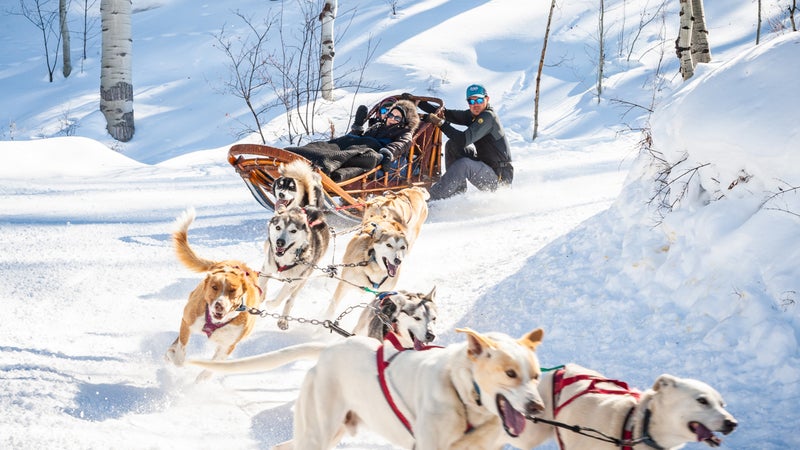
Hood
Midlayers donÔÇÖt always have hoods, but when they do, they come in two main flavors: hoods that fit over a helmet and those that fit under a helmet. There are a rare few that can do both comfortably (like the Zebru). Unders are typically thinner, formfitting, and less weather resistant than over-the-helmet hoods, but they seal in heat around the neck and face,╠řlike a snug balaclava. Overs are usually bulkier and provide better protection from the elements╠řbut tend to be draftierÔÇöand, if not adjustable with toggles or cinches, often fit poorly without a helmet. Whichever the case, the best hoods are the ones you donÔÇÖt notice. They move with your head as you look all around instead of sitting stiffly on your shoulders while your head pivots inside.
When layering, you need only one or two hoods at the most, otherwise theyÔÇÖll just bunch up and do little more than collect snow. Since hoods are standard on outer layers, itÔÇÖs good to wear a combo of hooded and hoodless midlayers.
Pockets
While midlayers rarely have internal pockets, they usually have a chest pocket, hand pockets, or both, which can sometimes double as vents. Hand pockets are nearly impossible to reach if youÔÇÖre wearing one or more layers on top, a harness, or a backpack with a hipbeltÔÇöso theyÔÇÖre less important. Chest pockets, on the other hand, are quite useful. TheyÔÇÖre easy to access when youÔÇÖre on the move and keep their contents heated, since they sit close to the body. This can prevent a phone battery from dying in the cold╠řor keep your snacks from freezing into bricks.
A subtle╠řyet important design feature in vertical chest pockets is an angled openingÔÇöone that puts the top of the pocket farther away from the main body zipper. When IÔÇÖm on the move and wearing multiple layers, IÔÇÖm constantly adjusting the zips for heat regulation. If a chest pocket is parallel and close to the main zipper, itÔÇÖs all too easy to grab the wrong pull, especially with gloves on, and accidentally dump its contents. An angled zipper (like in the Zebru and Alpha Freak mentioned here) makes a mix-up less likely.╠ř
Thumb Holes
These allow your thumbs to hook through the sleeve ends to prevent them from riding up and exposing skin between your gloves and midlayer. They also allow you to thread one sleeve through another without the inner bunching up. Some people love them, and some people hate themÔÇöitÔÇÖs personal preference. (If theyÔÇÖre well-designed, those who donÔÇÖt like thumb holes probably wonÔÇÖt notice them.) ItÔÇÖs worth mentioning, however, that sleeves with this feature tend to run a few inches longer than sleeves without them.
Waist Cinch
Most midlayers are stretchy and have an athletic fit, so they often donÔÇÖt need or have an adjustable waist-hem cinch. But some do. These are useful for heat regulation (tighten the waist to trap heat, or keep it looser for better airflow)╠řand to keep snow out when youÔÇÖre floating through the freshies or postholing.
Chest Zippers
Full-length zippers make for easier on-the-fly wardrobe changes╠řbut add weight and bulk to a layer. Half- and quarter-zips make a layer╠řharder to remove╠řbut still allow adjustable ventilation and can be more comfortable tucked inside pants or under a harness. For the best layering technique, I wear a half- or quarter-zipÔÇöone that IÔÇÖll keep on all dayÔÇöclosest to my body, and if I need a second midlayer, IÔÇÖll wear a full-zip on top so I can quickly strip or put it back on as my activity level or the temperature fluctuates throughout the day.
Fit and Sizing
Midlayers typically have an athletic╠řor slim╠řcut because they need to fit underneath one or more layers, but they shouldnÔÇÖt be so tight that they inhibit movement or dig uncomfortably into the armpits. This adds a╠řchallenge to layering, since each piece╠řin the stack needs to accommodate slightly more bulk than the one beneath it.
Also note that North American companies tend to size larger than their European counterparts. A small from The North Face will likely size similarly to a medium from Ortovox, for example.
